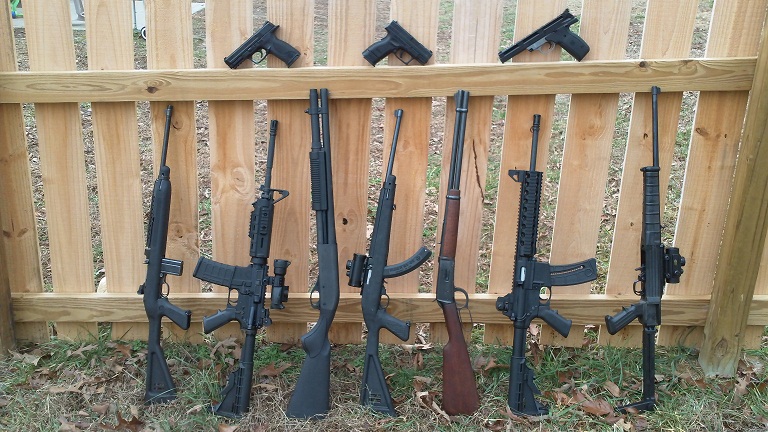Sir:
‘The Survival Battery’ is an entertaining read, but the writer has overlooked several vital concerns. For one thing, even the budget plan requires stocking nine different calibers. I also don’t agree with the mix of operating systems. It includes a mix of single-action and double-action revolvers, DAO and/or single-action semi-auto pistols, pump shotguns, bolt-action rifles, air guns, and modern semi-auto rifles.
Maintaining proficiency with all these systems will be very difficult. In a SHTF situation, every-day and “social” firearms should be the same. Just don’t expect a handgun to do a long-gun’s job. Shoot the bear with your rifle/shotgun. You did bring it, didn’t you? Or do you always drive screws with a hammer?
A 4” DA service revolver in .357 Magnum is an excellent entry-level handgun. It shoots .38s for training and heavy loads when needed. Revolvers are more tolerant of variations in ammo and may be less intimidating for new shooters. Glocks are reliable and readily available on the used-gun market. Government agencies are selling off their .40s at good prices, but 9mm and .45 ammunition may be easier to come by. Find a holster you can wear all day, every day with comfort, whatever you are doing. Stock up on speedloaders and magazines.
Skip the air guns and the .22 pistol and go right to a rifle. The Ruger 10-22 is hard to beat. Magazines are rugged and affordable. Buy lots, both 10- and 25-round. It’s also hard to fault the Remington 870 unless some of your people are left-handed. Then the Mossberg 500, with its tang safety, comes to the fore. It’s cheap and looks it, but it works and accessories abound. If cheapness bothers you but you need ambidexterity, look at the Browning BPS. All long-guns need slings.
The Remington 700 in .308 is a capable platform. No argument there, but it might be well to have an M1A in the mix. I also like what I hear about the Ruger Precision Rifle. M1A magazines work in it. Buy quality mags, like Checkmate. Good AR-15s are accurate and easy to handle. They accept an unmatched array of parts and accessories. Just remember, .223s are not .308s. If you can’t have both, go with the .308. Leupold and Burris scopes are excellent, but don’t skimp on mounts and rings. Buy all-steel, the best you can. Look into Trijicon scopes and sights. Consider NV instead of, or in addition to, suppressors.
On that note, don’t over-buy. Just because you can afford a Barrett doesn’t mean you need or can use the extra range and power. Can you shoot well enough to justify a $2500 Les Baer, or would a $700 Springfield Range Officer do? Invest in extra parts, magazines, and ammunition for guns that match your situation and ability. Invest in professional training. Shoot often. Confidence is part of your weapons system!
So: .38/.357, 9mm or .45 ACP for handguns, 12 gauge shotguns, 22 LR and .308, which is four calibers instead of nine. Add .223 if you must. Standardize on revolvers, DAOs or 1911s, but standardize. I sold the best handgun I’ll ever own, an HK P7M8, because I have Colt/Browning reflexes. Remington 700s for the bare-bones budget, maybe M1As and a Ruger PR if your wallet allows. – Randy in Maine










